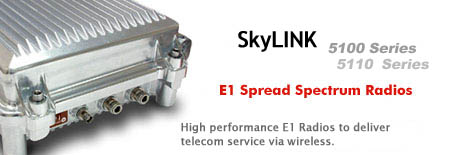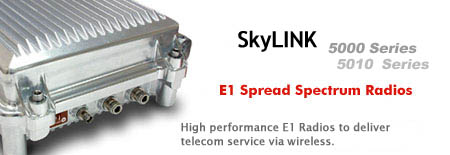-
The K-Best SSL (SuperSkyLink) Series of digital radios provides high-capacity transmission, flexibility, features, and convenience for wireless digital communications networks. The SSL Series digital point-to-point radios represent a new microwave architecture designed to address universal applications for PDH and SDH platforms. This advanced technology platform is designed to provide flexibility to customers for their current and future network needs.
The SSL Series radio is based upon a common platform to support a wide range of network interfaces and configurations. It supports links for up to 63 x E1/T1, 100BaseTX Ethernet, 1000BaseT Ethernet, and 1~3 x STM-1/OC-3. The radio family is a spectrum and data rate scalable, enabling service providers or organizations to trade-off system gain with spectral efficiency and channel availability for optimal network connectivity. K-Best SSL Series digital radio family enables network operators (mobile and private), government, and access service providers to offer a portfolio of secure, scalable wireless applications for data, video, and Voice over IP (VoIP).
The K-Best SSL Series digital radios comprise a Software Defined Indoor Unit (IDU) and an Outdoor Unit (ODU). The IDU is designed to be frequency-independent, and the ODU is designed to be capacity-independent. The Software Defined IDU allows selection for multiple capacity options, modulation types, radio frequency channels, and transmit output power levels to accommodate and adhere to worldwide regulatory and spectral efficiency requirements. The companion ODU, mounted outdoors, can support frequency bands from 1 to 15 GHz.
The K-Best SSL Series Digital Radio includes integrated Operations, Administration, Maintenance, and Provisioning (OAM&P) functionality and design features enabling simple commissioning when the radio network is initially set up in the field at the customer’s premises. Furthermore, a highlight of K-Best SSL Series’ radio products is scalability and the capability to support a ring-type architecture. This ring or consecutive point radio architecture is self-healing in the event of an outage in the link and automatically re-routes data traffic, thereby ensuring that service to the end user is not interrupted.
SuperSkyLink - SSL Series
Frequency Band
4.5 GHz
5.8 GHz
7 GHz
8 GHz
10 GHz
11 GHz
12 GHz
13 GHz
15 GHz
Frequency Range (GHz)
4.4~5.0
5.725~5.85
7.125~7.425
7.425~7.725
7.725~8.275
8.275~8.5
10.15~10.65
10.7~11.7
11.7~12.5
12.2~12.7
12.75~13.25
14.4~15.35
Traffic Capacity
Super PDH Options: up to 63 x E1/T1
Ethernet Options: Scalable 1~300Mbps
SDH Options: 1~3 x STM-1/OC-3 SONET
Configuration
1+0, 1+1 Hot Standby, 1+1 diversity, 2+0 East/West Repeater
Modulation
QPSK, 16QAM, 32QAM, 64QAM, 128QAM, 256QAM Link Provisioning
Channel BW
7 ~ 56 MHz depending on capacity and modulation
Channel Select
Multi-channel accessed via UI
TX Output Power (dBm)
25
25
25
25
23
23
22
20
20
Sensitivity
Depending on capacity and modulation
Typical: -62.5 dBm for 300Mbps 128QAM
-65.5 dBm for 150Mbps 128QAM
-72.0 dBm for 100Mbps 32QAM
Frequency Stability
+2.5 ppm
Traffic Interface
T1/E1: 100W/120W, 2 x RJ-48C Female , others - Molex High Density 60-pin
Ethernet: 10Base-T, 100Base-TX, 1000Base-T RJ-45, SFP
STM-1: Single Mode SC Duplex Fiber 1310 nm or 75 Ohm BNC Coax or SFP
Service Channel
RS422 via RJ-45 (64kbps), Alarm Port (2 x Form C, 2 x TTL O/P, 4 x TTL I/P)
XPIC
Supported
Radio Traffic Aggregation
Supported
Network Management
Proprietary GUI, SNMP, CLI
DC Power
-40 ~ -60 VDC, < 100W (1+0), < 200W (1+1)





